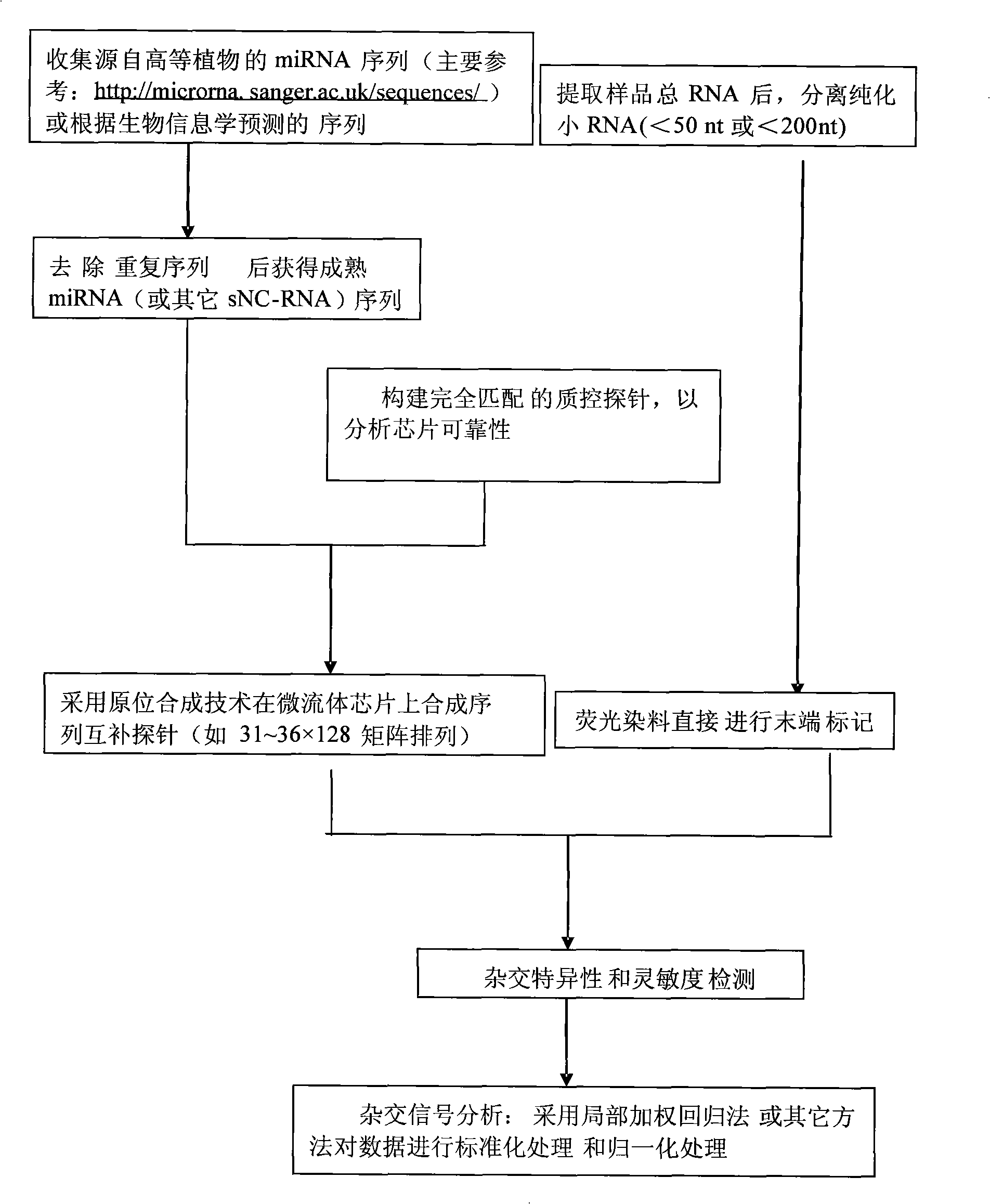Detection process for synthesizing microfluid chip by in-situ method
A technology of microfluidic chip and in situ synthesis, which is applied in the field of detection of known miRNA by chip, and achieves the effect of high sensitivity
Inactive Publication Date: 2008-10-15
ZHEJIANG SCI-TECH UNIV
View PDF0 Cites 7 Cited by
- Summary
- Abstract
- Description
- Claims
- Application Information
AI Technical Summary
Problems solved by technology
However, the above studies are limited to high-throughput detection of miRNAs that have been reported in one species, and so far there has been no report of using known miRNAs of existing species to detect and discover unknown miRNAs of other species
Method used
the structure of the environmentally friendly knitted fabric provided by the present invention; figure 2 Flow chart of the yarn wrapping machine for environmentally friendly knitted fabrics and storage devices; image 3 Is the parameter map of the yarn covering machine
View moreImage
Smart Image Click on the blue labels to locate them in the text.
Smart ImageViewing Examples
Examples
Experimental program
Comparison scheme
Effect test
Embodiment 1
Embodiment 2
Embodiment 3
the structure of the environmentally friendly knitted fabric provided by the present invention; figure 2 Flow chart of the yarn wrapping machine for environmentally friendly knitted fabrics and storage devices; image 3 Is the parameter map of the yarn covering machine
Login to View More PUM
 Login to View More
Login to View More Abstract
The invention discloses a detection method synthesizing microfluidic chips in situ, which comprises the following steps that: 1) a sequence of non-coding small RNAs reported on the prior model plant is utilized, sequence information of miRNA is preferably selected, and complementary oligonucleotide hybridization probes are designed according to the sequence of a sense strand or an antisense strand of miRNA; 2) an oligonucleotide chip is prepared by an in-site synthetic method; 3) small RNAs smaller than a 50 oligonucleotide group are extracted from a plant to be detected, then are hybridized with the probes in the chip after making end labeling, and the result of chip hybridization is obtained to perform qualitative and quantitative analysis. The detection method can be used for the validation of miRNA (and other sNC-RNAs) obtained through the forecast by a bioinformatics method, can also be used for the detection and identification of miRNA (and other sNC-RNAs) in new plant species, and can also be used for the determination of miRNA (and other sNC-RNAs) variation relation under different treatment conditions (eg. under the condition of virus infection).
Description
A detection method using in situ synthesis of microfluidic chips technical field The invention relates to a method for detecting and identifying small non-coding RNAs in plants, in particular to a method for detecting known miRNAs using a chip. Background technique MicroRNA (miRNA) is a class of non-coding small RNAs widely present in eukaryotes. They regulate post-transcriptionally by complementing target mRNA sequences, and play an important role in the regulation of gene expression in plant growth and development. Conservation is an indicator of the function of miRNAs, and conserved miRNAs play very important roles in the regulation of conserved genes, such as leaf and flower morphology and signal transduction. Unconserved miRNAs may play more specific roles in specific plant species, such as cotton fiber differentiation and elongation. miRNAs are highly conserved in different populations of animals or plants. For example, in animals miRNAs such as miR7 and miR18 are ...
Claims
the structure of the environmentally friendly knitted fabric provided by the present invention; figure 2 Flow chart of the yarn wrapping machine for environmentally friendly knitted fabrics and storage devices; image 3 Is the parameter map of the yarn covering machine
Login to View More Application Information
Patent Timeline
 Login to View More
Login to View More Patent Type & Authority Applications(China)
IPC IPC(8): C12Q1/68
Inventor 陈集双尹雪鸿竺锡武朗秋蕾高晓莲杨文征杜志游
Owner ZHEJIANG SCI-TECH UNIV
Features
- R&D
- Intellectual Property
- Life Sciences
- Materials
- Tech Scout
Why Patsnap Eureka
- Unparalleled Data Quality
- Higher Quality Content
- 60% Fewer Hallucinations
Social media
Patsnap Eureka Blog
Learn More Browse by: Latest US Patents, China's latest patents, Technical Efficacy Thesaurus, Application Domain, Technology Topic, Popular Technical Reports.
© 2025 PatSnap. All rights reserved.Legal|Privacy policy|Modern Slavery Act Transparency Statement|Sitemap|About US| Contact US: help@patsnap.com

